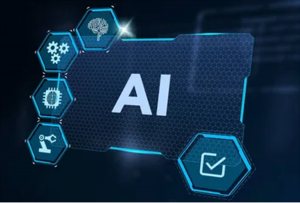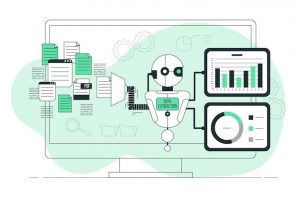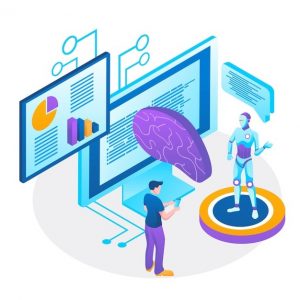Introduction
Artificial Intelligence (AI) is booming now like never before, with hundreds of new AI apps, features, and platforms being released every week. With the pace at which AI is developing, ensuring the technology is safe has become increasingly important. This is where responsible AI comes into the picture. Responsible AI refers to the sustainable development and use of AI systems, following ethics, transparency, and accountability. While all AI firms have their own rules and checklists to ensure this, platforms like TensorFlow and Microsoft offer sets of tools that anybody can use to make their AI responsible. This article features some of the most essential TensorFlow tools used in each machine learning model deployment phase.
Learning Objectives:
- Understand how TensorFlow contributes towards building responsible AI applications by providing a wide range of tools and resources.
- Learn about the different phases of machine learning model deployment.
- Explore the various tools TensorFlow offers in each phase of the machine learning model deployment process.

Table of Contents
What Is Responsible AI?
Responsible AI refers to developing and using artificial intelligence (AI) systems in an ethical, transparent, and accountable way that aligns with social values such as privacy, fairness, safety, and sustainability. Responsible AI is important because it ensures that AI systems are designed and used to benefit society as a whole rather than causing harm or perpetuating biases.
Some key principles of responsible AI include transparency, accountability, fairness, privacy, safety, and sustainability. Developers can apply these principles throughout the entire lifecycle of an AI system, from design and development to deployment and ongoing monitoring.
Today we will explore how we can build responsible AI applications with TensorFlow.
Tensorflow and Its Contribution Towards Responsible AI
TensorFlow is an open-source platform for building and deploying machine learning models. Developed by Google, TensorFlow provides various tools and resources for creating AI applications across various domains, including image and speech recognition, natural language processing, and predictive analytics.
Since it is open-source, transparency and interpretability are two key components of TensorFlow. Besides this, the platform has also released a set of tools and guidelines for building responsible AI applications. Let’s explore a few useful tools used in the various phases of machine learning model deployment.

Phase 1: Problem Definition
TensorFlow has a set of tools for the problem definition phase. PAIR (People + AI Research) guidebook and PAIR explorables can assist you when planning AI applications. TensorFlow guidelines include strategies for selecting data sets, choosing models, and evaluating model performance. Following these guidelines ensures that your AI application is accurate, reliable, and effective.
The PAIR guidebook offers comprehensive guidance on designing AI products that align with user needs and values. The PAIR explorables are interactive blogs that help designers and developers explore complex topics related to responsible AI, such as machine learning algorithms and fairness considerations.
Phase 2: Data Collection and Preparation
The second phase of machine learning involves data collection and preparation. TensorFlow offers several tools to facilitate this phase.
TensorFlow Data Validation (TFDV)
One of the most useful tools offered by TensorFlow is TensorFlow Data Validation (TFDV). TFDV is designed to identify anomalies in training and serving data. It can also automatically create a schema by examining the data. This component can be configured to detect different classes of anomalies in the data.
TFDV performs validity checks by comparing data statistics against a schema that codifies the expectations of the user. This helps users ensure that their data meets certain standards before being used for training or testing. Additionally, TFDV can detect training-serving skew by comparing examples in training and serving data. This is important as it ensures the model is trained on data representing the data it will encounter during production.
Know Your Data (KYD)
Another useful tool TensorFlow offers in this phase is Know Your Data (KYD). KYD provides a simple interface for understanding the structure and content of your data. It lets users quickly explore and visualize their data to better understand its properties. The most interesting thing about this tool is its interactive GUI. The users can also create new groups in the datasets based on their labels and various attributes. For now, this is in Beta Phase.

Phase 3: Building and Training
The third phase of the machine learning workflow involves building and training the models. In this phase, TensorFlow provides a number of tools that use privacy-preserving and interpretable techniques to train models effectively.
TensorFlow Federated (TFF)
TensorFlow Federated (TFF) is an open-source framework designed for machine learning on decentralized data. This approach to machine learning, known as Federated Learning, involves training a shared global model across many participating clients who keep their training data locally. TFF enables more efficient training while preserving data privacy by distributing the training process across multiple devices.
TensorFlow Lattice (TFL)
Another useful tool for training models in TensorFlow is TensorFlow Lattice (TFL). This library implements flexible, controlled, and interpretable lattice-based models. TFL enables you to add domain knowledge into the learning process by incorporating common-sense or policy-driven shape constraints that satisfy constraints such as monotonicity, convexity, and pairwise trust. With TFL, you can build accurate and interpretable models, making understanding how the model arrives at its predictions easier.

Phase 4: Model Evaluation
Several factors must be considered to test the trained model in Phase 4 of Model Evaluation. These factors include privacy, fairness, interpretability, and security. TensorFlow provides various tools to evaluate these factors for a given model.
Fairness Indicators
Fairness Indicators is a library that facilitates easy computation of commonly-identified fairness metrics for binary and multiclass classifiers. This tool suite compares model performance across subgroups to a baseline or other models. It also uses confidence intervals to surface statistically significant disparities and performs evaluation over multiple thresholds.
What-If Tool (WIT)
With WIT, one can visually test how the model’s performance changes with a variation in various input variables. This allows testing AI models for a set of hypothetical scenarios, which is the primary objective of this tool.
TensorFlow Privacy Tests
TensorFlow Privacy Tests is another library that assesses classification models’ privacy properties. It allows the evaluation of the privacy properties of a model before deploying it in real-world applications.

Phase 5: Deployment and Monitoring
Once your machine learning (ML) and artificial intelligence (AI) model is ready, the next step is to deploy it. However, deploying a model in production may result in unforeseen issues affecting its performance. Therefore, you must monitor the model’s performance after deployment to identify and resolve potential problems.
Model Card Toolkit (MCT)
It is a library that simplifies the documentation of models. Model cards contain all the necessary information about the ML and AI models you have built. This information may include training methodology, datasets used, data collection method, etc. With MCT, generating model cards becomes streamlined and automated, providing context and transparency into a model’s development and performance.
ML Metadata (MLMD)
MLMD is another library that records and retrieves metadata associated with ML developer and data scientist workflows. It is an integral part of TensorFlow Extended (TFX) but is also designed for independent use. Every run of a production ML pipeline generates metadata containing information about the various pipeline components, their executions (e.g., training runs), and resulting artifacts (e.g., trained models). In case of any unexpected pipeline behavior or errors, this metadata can help analyze pipeline components’ lineage and debug issues. Think of this metadata as the equivalent of logging in software development.
Conclusion
Building responsible AI applications ensures that AI systems are designed and used ethically and transparently. TensorFlow is an excellent platform for building and deploying machine learning models, providing numerous tools and resources for creating responsible AI applications across various domains. By following the principles of transparency, accountability, fairness, privacy, safety, and sustainability throughout the entire lifecycle of an AI system, developers can ensure that their models benefit society as a whole while minimizing harm and perpetuating biases. With TensorFlow’s set of tools for problem definition, data collection and preparation, build and train, model evaluation, and deployment and monitoring, developers have access to everything they need to create responsible and effective AI applications.
Key Takeaways:
- TensorFlow enables responsible AI across domains like image and speech recognition, NLP, and predictive analytics with tools for problem definition, data prep, training, evaluation, deployment, and monitoring.
- TensorFlow’s tools and guidelines promote transparency, accountability, fairness, privacy, safety, and sustainability for responsible AI development, enabling effective applications benefiting society.
Frequently Asked Questions
A. TensorFlow is an open-source platform for building and deploying machine learning models developed by Google.
A. TensorFlow provides tools and guidelines for building responsible AI applications, including strategies for selecting data sets, choosing models, and evaluating model performance. These tools can be applied throughout the entire lifecycle of an AI system, from problem definition to deployment and ongoing monitoring.
A. Ethical AI pertains to values and social economics, while responsible AI concerns technology’s tactical development and use. Thoughtful development is necessary for AI’s potential societal benefits.




